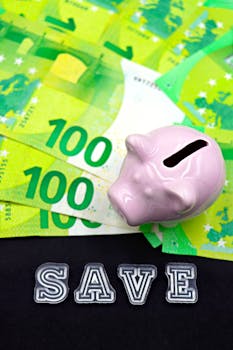Investing basics
Why Emotions Are the Biggest Risk in Investing
Discover why emotions in investing are your biggest risk and how simple routines, rules, and actionable scripts can help you avoid costly mistakes during market swings.
Advertisement
Watching stocks swing up and down feels a lot like riding a roller coaster—only your wallet is along for the ride. Emotions in investing sneak up, especially when the news is overwhelming. Most of us feel a gut reaction to losses or big market moves before we ever click buy or sell.
The stakes are high since even subtle emotional nudges can shape decisions in lasting ways. Financial goals hang on every choice, but fear or excitement push against reason. Recognizing this doesn’t fix it—most people need practical ways to handle these strong, lurking feelings.
This article explores exactly why emotions in investing hold so much power and how small behavioral tweaks protect your money. Let’s dive into the common traps, bust some myths, and walk away with plain-language steps you can try today.
Recognizing Emotional Triggers Changes Your Behavior in the Market
Notice which moments set off emotion-driven trades and you’ll spot the first step to controlling your reactions. Most investors mistake emotion for logic until losses mount quickly.
It’s helpful to name the specific feelings—anxiety, greed, frustration—that spark rash habits. Emotions in investing become obvious when you review trades and realize patterns tied to mood, not research.
Spotting Fear Before It Ruins a Portfolio
When you scan headlines blaring “market crash,” shoulders tense and your mouse hovers over the sell button. This is fear in action. Instead, take one full minute before clicking—this simple pause interrupts the instinctive reaction and gives time for reasoned control.
These moments of pause are like putting a speed bump on an investment highway. By slowing down, you force attention back to the plan you originally set, not the anxiety of now.
To cement this habit, jot down your gut feeling in a journal beside every trading decision. With repetition, you’ll start to recognize fear before it has a chance to sabotage your returns.
Gauging Overconfidence in Good Markets
When markets rise steadily, it’s typical to think, “I can’t lose now,” or “This is easy money.” Overconfidence leads to large, risky trades or skipping research. These thoughts should raise red flags immediately.
Instead, say aloud: “Am I making this move because I’m certain, or because things have gone well lately?” Putting words to these motives resets your logic and curbs emotional overreach before it snowballs.
Tracking each win in a success log and reviewing periodic losses creates honest balance. Over time, the pattern reveals how emotions in investing distort risk-taking and reminds you not to confuse luck with skill.
| Trigger | Common Reaction | Observed Result | Action Step |
|---|---|---|---|
| COVID-19 headlines | Panic selling | Locking in losses | Pause and revisit investment plan |
| Record highs | Chasing performance | Buying overpriced shares | Rebalance and check asset allocation |
| Tip from a friend | Impulse buying | Unsuitable investments | Research independently before buying |
| Big market drop | Selling everything | Missed recovery | Stay the course; trust diversification |
| Slow news week | Boredom trading | Unplanned risks | Review goals instead of acting |
Building Your Own Rules Shields You Against Emotional Whiplash
Setting rules ahead of time keeps you from making decisions you’ll regret. These rules act like guardrails when emotions in investing are strongest after sudden moves.
Decide limits, like a maximum loss per trade or a waiting period before acting—this pre-commitment anchors good behavior when feelings run high.
Design Rules That Fit Your Style and Values
If you’re long-term focused, your rule might be: “Hold every stock at least two years unless fundamentals break.” This timespan blunts short-term freak-outs and anchors thinking in your real time horizon rather than hourly swings.
Risk-averse folks could use: “Never put more than 5% in any one asset.” By setting allocation caps, emotional outbursts don’t lead to concentrated, risky bets.
- Commit to a 24-hour cooling-off window before big trades. It minimizes snap decisions and creates distance from the initial emotional impulse.
- Set stop-loss and take-profit levels in advance, so trades execute before fear or greed hijack your plan. Automation reduces regret from second-guessing.
- Write a note for every buy or sell explaining the why. If your answer relates to fear or hype, consider delaying the action for review.
- Schedule a monthly check-in with yourself or a partner. This accountability turns investing into a process, not a series of emotional events.
- Review each holding’s original goal once per quarter. If your motive has drifted from logic to emotion, pause to rethink.
With every rule, you replace guesswork with structure, which helps you spot when emotions in investing are taking charge instead of data or research.
Scripts to Use in Stressful Moments
Practicing what you’ll say and do when fear grips you pays off. For example: “This loss feels big, but I chose this holding with a long-term horizon.” Say it aloud—this centers your response.
Before acting, count backward from 20 while reviewing your written rule. The countdown interrupts knee-jerk trading, granting logic a fighting chance.
- Repeat: “All investments swing up and down—it’s the plan, not today’s panic, that matters.” This mantra lowers anxiety and affirms your structure.
- Ask: “Will this trade help me meet my goals, or just calm discomfort?” If it’s about relief, pause and reset priorities.
- Visualize your portfolio next year, post-impulse. Will you thank yourself for sticking to rules, or regret the panic move? Let this image guide you.
- Discuss moves with a trusted friend before making changes. Another voice adds perspective and blocks isolated, emotion-led decisions.
- Document the scenario that prompted the urge. This creates a log for future learning and illustrates patterns where emotions in investing dominate.
Scripts and checklists bridge the gap between feeling and action, anchoring you to rational plans when emotions in investing create turbulence.
Anchoring Decisions in Data, Not Doubt
Relying on plain facts tames panic during tough market days. By benchmarking choices on research or portfolio stats, you sidestep mood swings and build confidence in every move—no matter what others are doing.
Trusting this process keeps you on track when emotions in investing scream “Do something now!”
Creating Your Own Market Dashboard
Customize a watchlist or use basic spreadsheets to track price trends, fundamental metrics, and returns over time. Regularly reviewing this data gives an anchor to reality and tamps down reactionary urges.
For example, set an alert for when a stock drops more than 10%. Review the chart and quarterly news before touching the sell button. Let facts, not fear, drive each move.
Rule: Never trade on gut feel without checking your dashboard first. This habit sidelines emotion and keeps your choices specific and accountable.
Knowing Your Risk ‘Comfort Zone’
Risk tolerance is personal—you decide based on savings, age, and confidence. Assign each investment a risk score; mark when a holding feels too nerve-wracking or too boring.
If an investment triggers stress every week, it’s likely outside your comfort zone and emotions in investing will turbocharge mistakes. Gradually swap these for steadier options.
Try shifting 5% from a wild stock into a diversified fund and note whether your stress or urge to check prices drops. Build this adjustment into your regular review process.
Quick Escapes from Market Panic: Scripts and Routines for Turbulent Periods
Having pre-planned words and routines acts like an emergency toolkit when emotions in investing spike with headlines or price drops.
With clear steps and reminders in hand, you sidestep impulsive decisions during chaos and return to sound strategy faster than the crowd.
A 3-Step Panic Interrupt Routine
First, close news feeds or trading apps immediately after a headline makes you nervous. Say: “This is temporary noise, not the endgame.”
Second, walk away for 10 minutes—getting physically distant from screens calms adrenaline and breaks urgency’s hold.
Third, reread your long-term goals document or portfolio plan and only reconsider action if this plan justifies it logically.
Rehearsed Scripts for Managing Hype
When friends urge you to buy the next “can’t miss” stock, respond with, “That sounds interesting, but I’ll research it and decide next week.”
In group chats, avoid comparing recent returns or bragging about windfalls. Instead, share a story about a reasoned, rule-based decision.
These scripts signal your commitment to long-term plans—showing others you value process over excitement or panic, which reinforces your own discipline too.
Learning from Mistakes: Rewriting Your Emotional Playbook over Time
Tracking every trade—plus your feelings at the time—offers a record you can review to spot where emotions in investing tripped you up. This refined self-awareness naturally shapes better habits.
Updating your rules based on real experiences creates a living playbook, customized for your hot buttons and triggers, not some generic advice.
Reviewing Trades Without Self-Criticism
It’s easy to berate yourself for reacting emotionally. Instead, treat each trade—win or loss—as raw data. Circle moments when you felt pressure to break rules or chase comfort.
Highlight one change that would sidestep that mistake next time. Maybe that’s a firmer rule or a new script. This turns slip-ups into building blocks.
Keep sessions short; five minutes after each week’s activity is enough. It’s about learning, not reliving each regret.
Tracking Progress and Rewarding Improvements
Celebrate periods where you stuck to plans through market swings. Recognize the drop in panic-checking prices—reward yourself with a small treat or fun activity.
This positive feedback loop turns discipline into habit. As you see more wins linked to your emotional awareness, it reinforces that plans outlast short-term urges.
Invite friends or partners to celebrate with you—accountability multiplies the effect and normalizes talking about emotions in investing in a supportive way.
Preparing for the Next Twist: Proactive Steps for Resilient Investing
You can’t forecast the future, but you can strengthen routines now to be ready for whatever shakes up the market next. Practicing emotional discipline gives you tools that work even in new scenarios.
Keep your plan, scripts, and rules handy. When volatility appears, reach for your toolkit—not your gut—so you react from confidence rather than fear.
Rotating Rule Reviews and Updating Goals
Every quarter, sit with your investment notebook and ask: “Did my reactions match my plan or my emotions?” If not, mark that as a spot to refine your process.
Update both rules and scripts for new life changes—like a new job, family event, or major purchase. The plan grows with you, so it always fits your real life.
Don’t be afraid to drop rules that don’t serve your goals anymore. Flexibility here is a strength, not a weakness, as long as it arises from logic, not pressure.
Establishing Support Networks for When Emotions Run High
Tell a trusted friend or partner about your process and rules. Ask them to be your check-in person for big decisions when emotions in investing surge most.
Create an investing group—real or online—where process and discipline are the theme, not chasing returns or venting about daily moves. This network insulates you against peer pressure and offers reminders to stay the course.
Share success stories within this community, focusing on examples where logic prevailed over panic. It normalizes the battle everyone faces and encourages collective improvement.
Turning Emotional Awareness into Long-Term Gains
Every investor fights emotions in investing. What separates long-term success is using structure, scripts, and support—not “gut feel”—to navigate turbulence and stay on track.
It’s never about eliminating emotions, but channeling them into routines and choices that strengthen your financial position, no matter the mood of the market.
With the right practical steps—anchored by real stories, tools, and community—you can win over your emotional impulses and make decisions you’ll be proud of next year and beyond.





